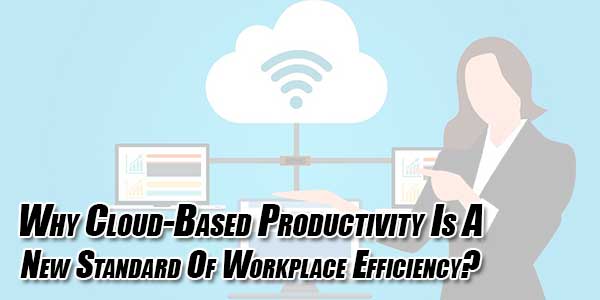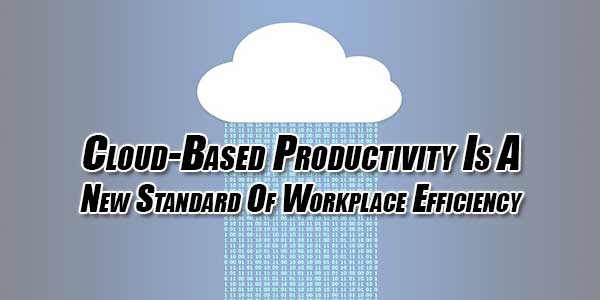
People often refer to the cloud about as this almost mystical innovation. The cloud, by popular accounts, is a transformative force that will change every sector of business and redefine what modern living means. And despite the boldness of these claims, they are close to the truth.
The ability to store data and perform complex calculations in virtual machines that scale up or down according to your needs is a dramatic game changer.
Every sector will use the cloud for different purposes. At its most basic, the cloud can maximize the productivity of your workplace – in terms of your staff, your resources, and your methodologies.
Table of Contents
How The Cloud Works?
We can’t talk about how the cloud can help a business without understanding what it is and there seems to be a lot of misconceptions on this front.
The fundamentals of cloud technology are easy to understand.
When you rely on the cloud to perform a task, that just means you’re connecting to a remote computer, or server, which then stores or processes that information.
That allows businesses to:
- Access extensive amounts of storage
- Share information easier
- Perform intensive computational tasks
And all of this with no investing in high-end hardware.
Cloud Computing is Beneficial to Every Business:
Any tool that relies on cloud technology is a productivity tool because it automates tasks that people would have to do otherwise.
These can take countless different forms, so cloud productivity could mean that you are using:
- OneDrive or Google Drive to collaborate on files together
- A cloud storage solution as a backup and security measure
- A platform like Microsoft Office 360 to ensure the easy deployment of standardized software to all of your staff.

The Discreet Advantages Are Sweeping:
Cloud computing has become a new standard in the quest of achieving high efficiency. It’s affordable, gives access to options earlier reserved for the largest players, and finds data touchpoints that would have been missed otherwise.
The cloud will bring the following benefits:
#1 Unprecedented Scalability:
Business technology has often benefitted only the wealthiest.
While the assembly line may have made manufacturing less costly, it came with an inherent overhead for investment, and it benefitted more to companies with a larger manufacturing infrastructure in place.
The point of sale systems used by restaurants used to occupy a similar principle. Initially, this software allowed for order placement but came to encompass everything from financial management to customer rewards programs.
The problem is that business technology required serious investment in both hardware (in the form of a server) and software.
Cloud technology has changed how the PoS system works. The software that a modern point of sale system works on is service-based, requiring next to nothing on the level of hardware to work. You can expand any given PoS system to multiple devices with little effort.
A restaurant could be a running point of sale of a single computer one day and have their servers entering orders at the table using designated tablets the next. The only cost is the overhead of the devices and their subscription plans.
This same scalability applies across sectors and industries, and it democratizes the adoption process for business owners.
There’s no premium overhead for investing in cloud computing technology.
Earlier, the pricing was almost identical for both the small business and enterprise, so small business had no way to afford the same solutions.
Now the cost of a plan for one to five employees is much cheaper than the cost of an enterprise with hundreds of employees.
Scaling your business up or down can be as simple as changing your subscription plan.
Businesses gain efficiency knowing they don’t have to invest in tech solutions that over-match their needs during the slow season or they pay too much for because the tech is catering to the needs of much larger companies.
#2 Big Picture Analytics:
Two traits of traditional software that made it too expensive for smaller players is that it was specialized and segregated.
A word processor is a word processor and an accounting platform is an accounting platform, and each was working within its own system.
Cloud-based productivity focuses on the notion that all data exists in a single ecosystem.
source: pixabay.com
APIs are becoming a big deal for this reason. APIs serve as portals, communication hubs between different software platforms. This enables you to take information that’s relegated to a single program and analyze it in the parameters of another.
The result is a productivity ecosystem where all information can be universally translated and applied to several needs.
But that information is useful in its own right.
Touchpoint information regarding how customers interact with your site, sales information on specific products, and customer service interactions on returns might be different flows of information relegated to different apps, but together they tell a story.
Until the rise of the cloud, it’s a story that most businesses would overlook. Cloud computing allows us to detect and analyze patterns between seemingly unrelated information.
Cloud productivity doesn’t just allow your different software platforms to communicate. The data from each now tells a tale that you can use for actionable insights.
#3 A Diversity of Options:
If it’s not clear already, the biggest advantage that cloud-based productivity offers is the level of flexibility there is across the board.
Businesses now have access to cloud models that cater to their unique needs. That doesn’t apply just to scaling or picking features. It also manifests in the variety of different cloud computing models there are to choose from.
Implementing cloud computing the right way means understanding these models and managing them appropriately for your business.
- A public cloud should be familiar to most people. Services like Google Drive, Box, and OneDrive allow each user to have a private storage platform they can freely share with others.
- Private clouds allow businesses to set up gated cloud communities with a higher level of security and establish their own protocol.
- Community clouds serve as confederations of private clouds unified under the banner of mutual need.
- Characteristics of these different methods can be mixed and matched in limitless ways as a hybrid cloud.
The model that’s right for you will depend on what your business needs.
The Need For Oversight:
We often regard cloud-based productivity as a magical solution, but it isn’t.
The cloud won’t fix any problems you have in the management or infrastructure of your company, and it won’t replace the need for difficult decision making among leadership.
What it will do is create a great layer of transparency within your business model. Employees can share information more rapidly, teams can communicate more effectively with one another, and managers can have far more meaningful data at their fingertips.
But if you want a cloud-based productivity model to succeed, you’re best off putting smart protocols in place.
Finding the right platforms with your business model and sticking with them will prevent inefficient technology adoption and the splintering of your staff across multiple software platforms.
The thing is that there are so many cloud solutions out there that it’s easy to see the advantages of each and adopt more than you need.
When you take the time to evaluate your company and strategically determine the right path towards cloud adoption, that’s when you’ll really make the most of the opportunities this bold tech has to offer.

 About the Author:
About the Author:
















Be the first to write a comment.